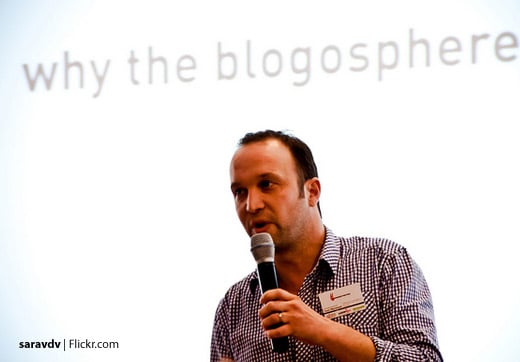Now that social media has become a critical part of most marketing strategies, who should be at the helm?
In the world of Social media there are many stakeholders involved. Brands work with several different divisions in advertising, marketing, public relations and communications to reach out to their audience through social media. When a brand needs a strong social media though, who do they turn to first and whose responsibility is it to create and own the strategy?
With things changing so fast in the social media space, what you set out to do isn’t always what you end up with.
Many cooks. One kitchen
It may seem like there are many cooks in the kitchen but ask Priyanka Goswami, Account Director at Proximity Canada and she’ll tell you “Social media is everyone’s responsibility – the client, the brand agency, the digital agency, PR, etc.,” she explains. “Each stakeholder will bring a unique perspective and strength to the table in crafting the overall strategy.” So while several different areas of discipline will be involved in the overall strategy, Priyanka feels that there has to be central ownership or “champion of the strategy at the client level, who can bring the various perspectives together.”
Martine Levy, Managing Director of DDB PR agrees that social media doesn’t belong under one particular discipline. “To a point, we should all be well versed in social, so we can effectively participate in strategy and ideation sessions, know how to monitor, measure and evaluate and to provide a more well rounded POV to the communications mix in servicing our clients,” says Levy. She adds that social is more than just community cultivation: “There is paid media, content creation, promotions, etc. It includes many areas of digital and as long as you specialize, then you can create and lead a SM campaign within an ad, PR, dedicated social or digital agency,” she says.
That’s how we roll
With things changing so fast in the social media space, what you set out to do isn’t always what you end up with. So what are some thoughts on how to address this with brands? How can we manage their expectations so they are comfortable with the process and happy with the end results? “This space is certainly dynamic and is changing on a daily basis,” Priyanka explains. “It’s often complex in nature –involves exploring unknown territories and technologies; integrating various platforms and touch points; and/or adapting new processes.” It’s important to understand that clients are not necessarily privy to this. “It’s our responsibility as their partners to be transparent and educate them,” she adds.
It’s often impossible to know in advance how a campaign will play out and most often the outcome and consumer response is unknown and unpredictable.
Setting up social expectations
Setting up the clients’ expectations at the outset is critical for success. Priyanka stresses, “Prior to getting into the creative process, it’s helpful to outline the role of each platform and/ or technology; why are we using this? What will we gain? How will measure success? Etc.” By doing so will help clients/ stakeholders understand the various elements involved, including the “complexities” and ease their comfort level. “At this point, it’s also helpful to set expectations around process and post-launch optimization, making them aware of the evolution of certain elements as the creative and production process progresses.”
With so many involved in the strategy, it’s important to emphasize the partnership and to make sure it is solution focused. “Clients don’t want to hear “we can’t do this as originally planned,” says Priyanka. And rightfully so. We as their partners need to offer up solutions to every problem, i.e. “We can’t do this, but here’s a solution(s) that still aligns with the overall objectives and campaign goals.” That’s the great benefit of digital/ social…there’s several ways of achieving an outcome,” she explains.
Great Expectations
It’s often impossible to know in advance how a campaign will play out and most often the outcome and consumer response is unknown and unpredictable. So how can we manage the client to be prepared for this? “Flexibility is important and the need to optimize post-launch and course correct is critical to ensure a positive consumer experience. So, the work shouldn’t stop at launch.” Priyanka goes on to give an example: “As was the case in the M&M’s Find Red campaign…
Directly after launch, we kept a close eye on all our social platforms as well as third party sites to gauge consumer reactions and feedback. We also carefully examined the analytics to hypothesize where consumers may be experiencing challenges and used these as opportunities to further optimize the campaign. Specifically, we learned that people weren’t seeing the hidden clues in our campaign video. We addressed this by simply making the video annotations more prominent along with adding a few more call to actions.”
According to Priyanka, what’s the best way to develop the strategy? “Working out an optimization strategy and/ or various scenarios is bound to lead to stronger campaign results and KPIs [Key Performance Indicators].”
If content is King, who’s writing it?
Now that we know social is created and managed by several disciplines, who’s job is it to write the content for Tweets, Facebook posts, etc.? According to Martine Levy, this is one area of Social media that belongs in one definitive place. “Community managers should be moderating and creating content, reporting, etc.”, she explains. “I find that PR practitioners make particularly good content managers, they are natural storytellers and well trained in managing communication with key publics. They excel at generating earned media and issues and crisis management”
In the past there was a definitive border around each individual discipline within a brand strategy. Today those lines are blurred. With social media as the key tool in any brand strategy, it’s critical now more than ever for all of these disciplines to work cohesively in order to deliver and execute a compelling and engaging social media campaign.
